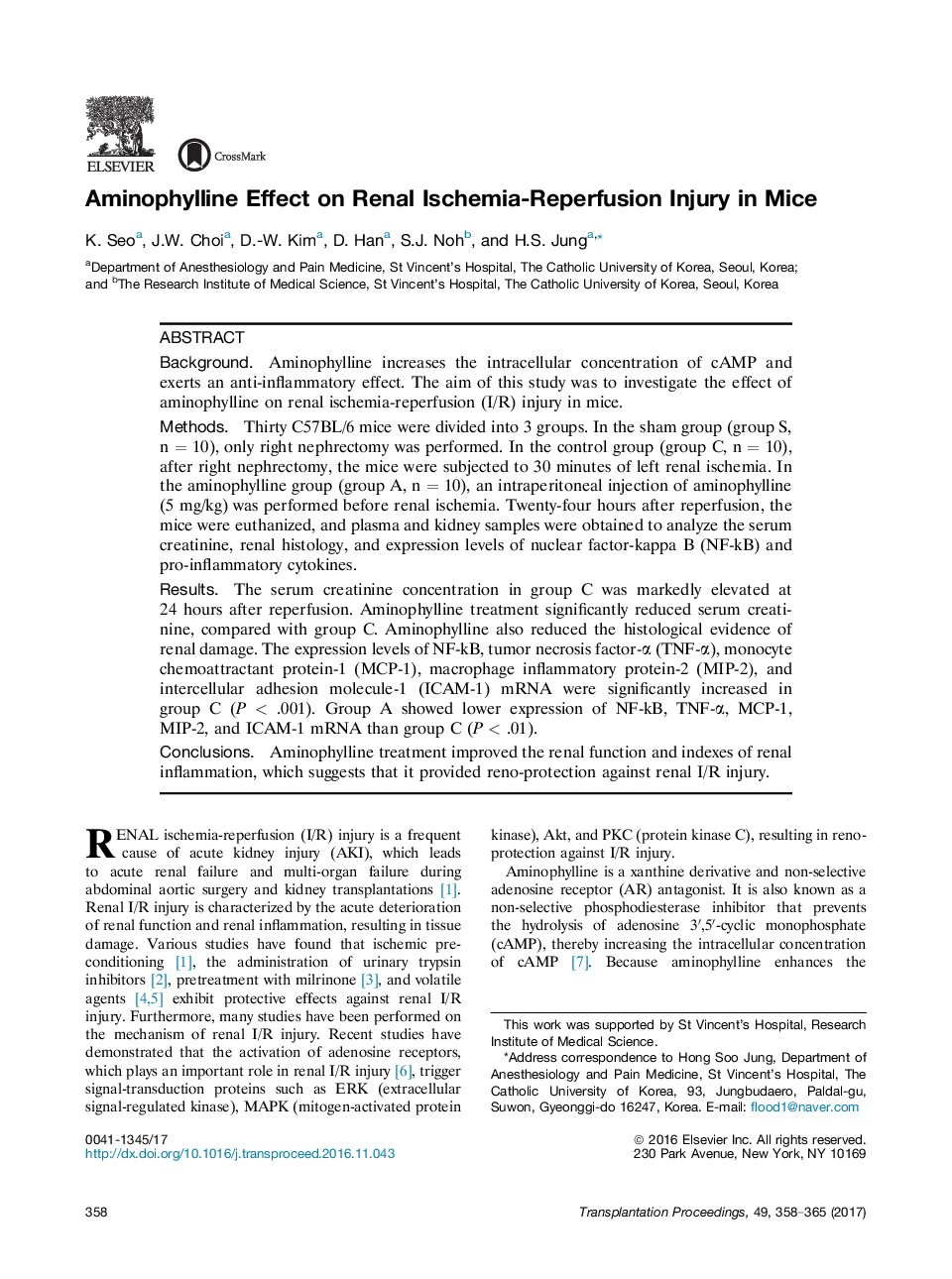| کد مقاله | کد نشریه | سال انتشار | مقاله انگلیسی | نسخه تمام متن |
|---|---|---|---|---|
| 5729263 | 1411678 | 2017 | 8 صفحه PDF | دانلود رایگان |

- The treatment of aminophylline improved renal function in renal ischemia-reperfusion injury.
- Renal histologic damage caused by renal ischemia-reperfusion injury was reduced by the treatment of aminophylline.
- The treatment of aminophylline decreased the expressions of pro-inflammatory cytokines and NF-kB in renal ischemia-reperfusion injury.
BackgroundAminophylline increases the intracellular concentration of cAMP and exerts an anti-inflammatory effect. The aim of this study was to investigate the effect of aminophylline on renal ischemia-reperfusion (I/R) injury in mice.MethodsThirty C57BL/6 mice were divided into 3 groups. In the sham group (group S, n = 10), only right nephrectomy was performed. In the control group (group C, n = 10), after right nephrectomy, the mice were subjected to 30 minutes of left renal ischemia. In the aminophylline group (group A, n = 10), an intraperitoneal injection of aminophylline (5 mg/kg) was performed before renal ischemia. Twenty-four hours after reperfusion, the mice were euthanized, and plasma and kidney samples were obtained to analyze the serum creatinine, renal histology, and expression levels of nuclear factor-kappa B (NF-kB) and pro-inflammatory cytokines.ResultsThe serum creatinine concentration in group C was markedly elevated at 24 hours after reperfusion. Aminophylline treatment significantly reduced serum creatinine, compared with group C. Aminophylline also reduced the histological evidence of renal damage. The expression levels of NF-kB, tumor necrosis factor-α (TNF-α), monocyte chemoattractant protein-1 (MCP-1), macrophage inflammatory protein-2 (MIP-2), and intercellular adhesion molecule-1 (ICAM-1) mRNA were significantly increased in group C (P < .001). Group A showed lower expression of NF-kB, TNF-α, MCP-1, MIP-2, and ICAM-1 mRNA than group C (P < .01).ConclusionsAminophylline treatment improved the renal function and indexes of renal inflammation, which suggests that it provided reno-protection against renal I/R injury.
Journal: Transplantation Proceedings - Volume 49, Issue 2, March 2017, Pages 358-365